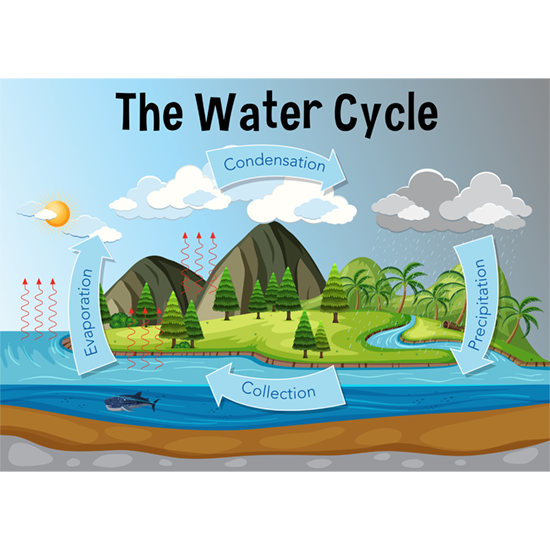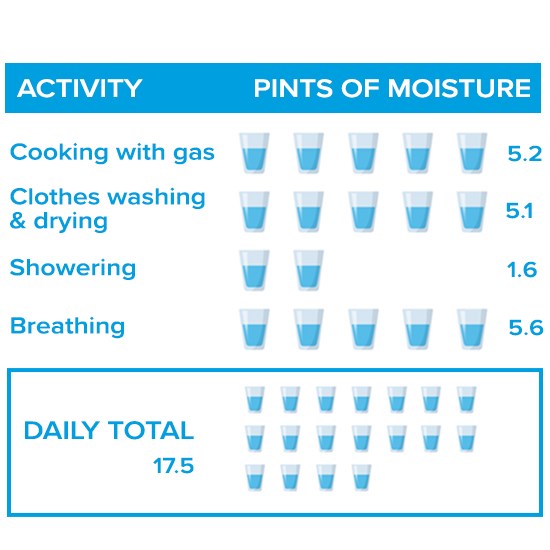
How to Respond to Tenants’ Damp Problems
As the temperatures drop, the perennial problem for landlords returns; damp patches, streaming windows, black mould, and tenant complaints.
Three main types of damp that affect properties
By Sarah Thomas, Nuaire Residential Sales Engineer April 2022
As the temperatures drop, the perennial problem for landlords returns; damp patches, streaming windows, black mould, and tenant complaints.
It isn’t always clear whether these issues are caused by the building or due to tenant lifestyle, or if it’s a combination of the two. When tenants complain about damp, it’s important to get insight into the symptoms of the problem so a plan can be put into place to resolve the issue.
There are three main types of damp that affect properties:
- Condensation
- Penetrating damp
- Rising damp
Penetrating and rising damp are often caused by structural defects, leaks, and failed damp courses. These must be rigorously investigated and put right by the landlord.
Condensation on the other hand is the most common cause of damp in homes, particularly in bedrooms, bathrooms, and kitchens. It is also one of the only causes of damp that can be treated by lifestyle changes and ventilation.

What is Condensation?
To understand how condensation works in the home, we can look at the water cycle. Heat, such as from our heating systems, cooking, and our own bodies causes liquid water to evaporate into water vapour. When warm water vapour meets colder surfaces such as mirrors, tiled surfaces, windows, and external walls, it turns back into liquid water. This is the process of condensation. The liquid water which collects on these colder surfaces creates what we know as damp patches leading to peeling wallpaper, cracking paint, and creating the perfect breeding ground for mould.
Confronting Condensation Damp
The only way to combat condensation is by limiting the amount of warm water vapour that is produced. However, this can be tricky as most water vapour in the home is produced from everyday activities such as cooking, bathing, cleaning, and even breathing.
The average family of four produce around 18 pints of moisture every single day
If moisture has no way to escape the property, it will stay inside and complete the water cycle, condensing on colder surfaces and creating damp problems. The problem is that opening windows in winter is not something people want to do as it cools the room and increases the demand on heating systems. There are 3.66 million households already in fuel poverty, so for many tenants, this is not even an option

Working with Tenants
There are some things tenants can do to limit the amount of water vapour they produce and help keep the property ventilated. However, it is important to avoid the subject of blame and focus on messages that support their quality of life.
Some advice that can be shared with tenants include:
- Knowing the difference between condensation, penetrating, and rising damp
- Keeping lids on pans when cooking
- Closing kitchen and bathroom doors when in use
- Drying clothes outside rather than use radiators
- Venting the tumble dryer to the outside
- Avoid using paraffin heaters or flue-less bottled gas heaters
- Opening windows and trickle vents to exhaust excess moisture
- Using extractor fans in bathrooms and kitchens vent the excess moisture to outside
- Keeping the heating at a constant temperature to prevent cold patches
- Keeping windowsills dry by wiping down any water
- Killing mould by using a fungicide wash
If the above points are followed, condensation can be a less persistent problem in the home. Always remember that the long-term solution to eradicating condensation dampness and avoiding tenant complaints is to invest in mechanical ventilation units.
Because damp, condensation, and mould is so difficult to pin a cause to, it can just as easily be the tenant as much as the building and landlord. When properties are ventilated right, condensation cannot exist and eliminates the perennial problem of damp patches, streaming windows, black mould, and tenant complaints.
